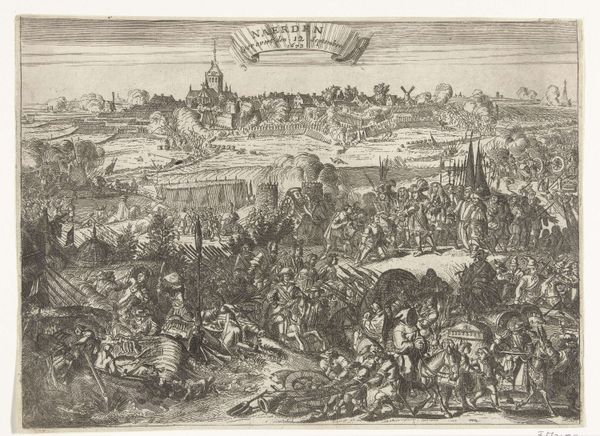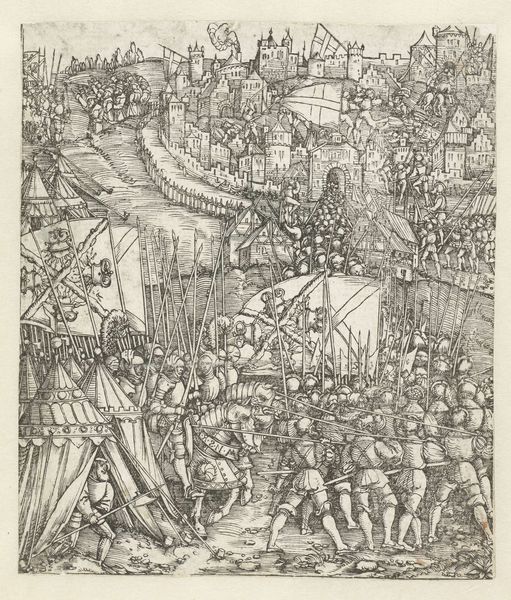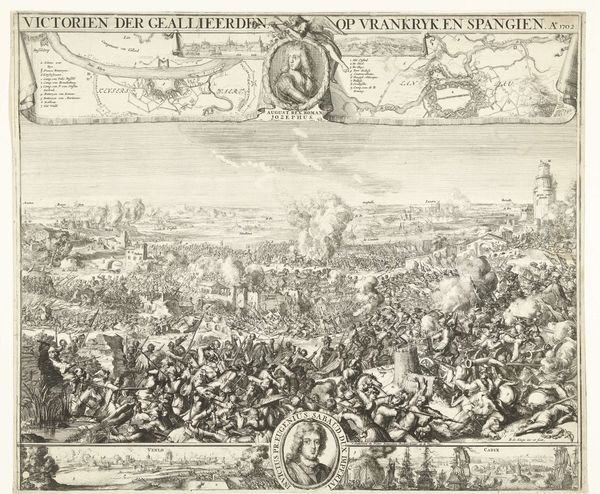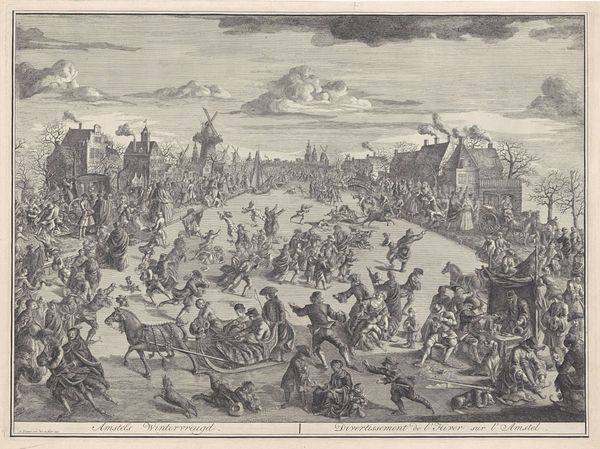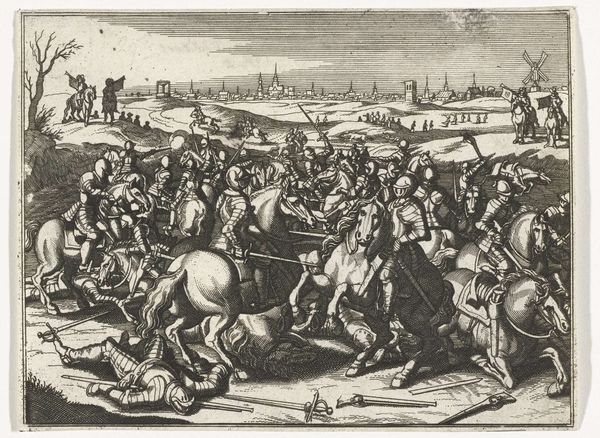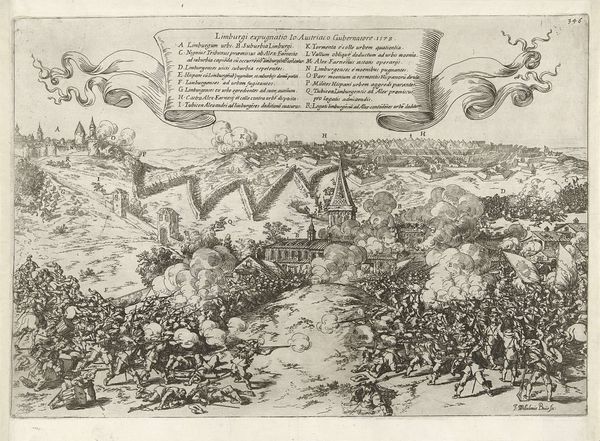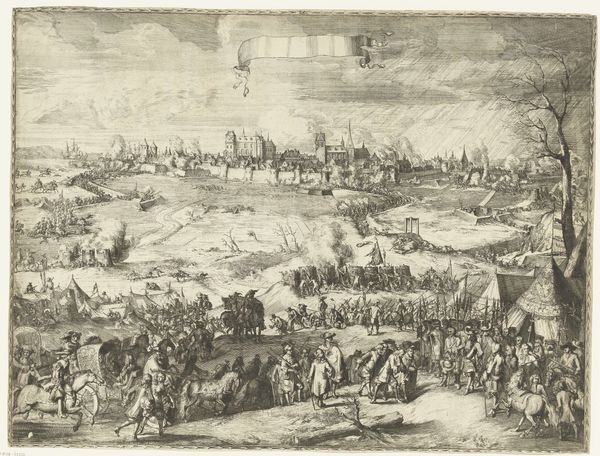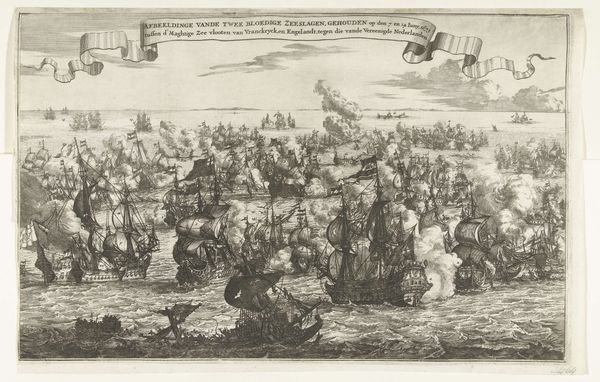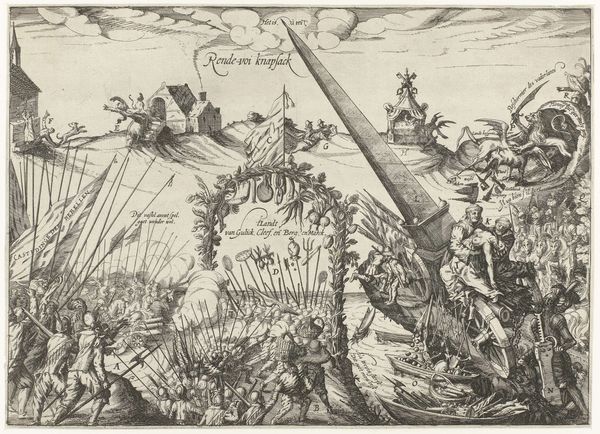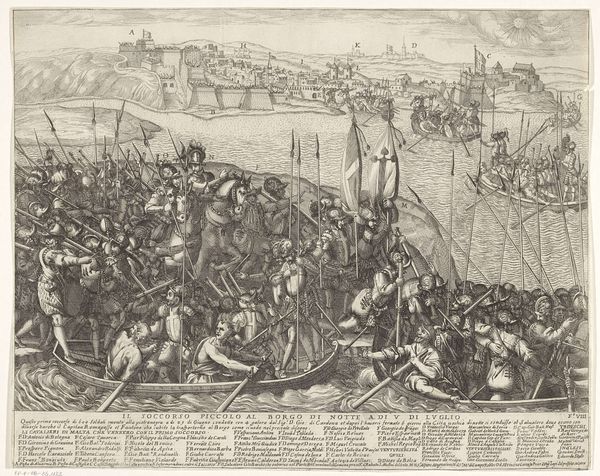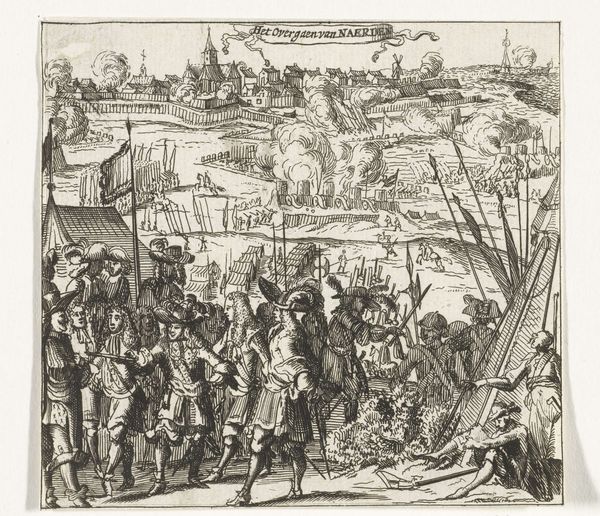
print, engraving
#
narrative-art
#
baroque
#
dutch-golden-age
# print
#
figuration
#
cityscape
#
history-painting
#
engraving
#
realism
Dimensions: height 309 mm, width 401 mm
Copyright: Rijks Museum: Open Domain
David Philippe's engraving captures King Charles II's arrival in Delft in 1660. Note the heraldic symbols adorning the clouds overhead, potent emblems of power and legitimacy, announcing the return of the monarch and restoration of order. These symbols carry echoes of ancient Roman triumphs, where eagles and laurel wreaths signified imperial authority. Consider the cherubic figures surrounding the coat of arms; these are not merely decorative. They tap into a deeper collective memory, a shared understanding of divine right and heavenly approval. We see such motifs repeated across centuries, from Renaissance paintings to Baroque sculptures, each time subtly shifting in meaning, yet always evoking a sense of awe and reverence. The deliberate arrangement of these symbols suggests a powerful psychological manipulation. By associating the monarch with divine favor, the artist attempts to instill a sense of security and hope in the viewer, engaging our subconscious desire for stability and leadership. This cyclical progression of symbols reveals how history repeats itself, constantly reinterpreting and reimagining the past in the service of the present.
Comments
No comments
Be the first to comment and join the conversation on the ultimate creative platform.
